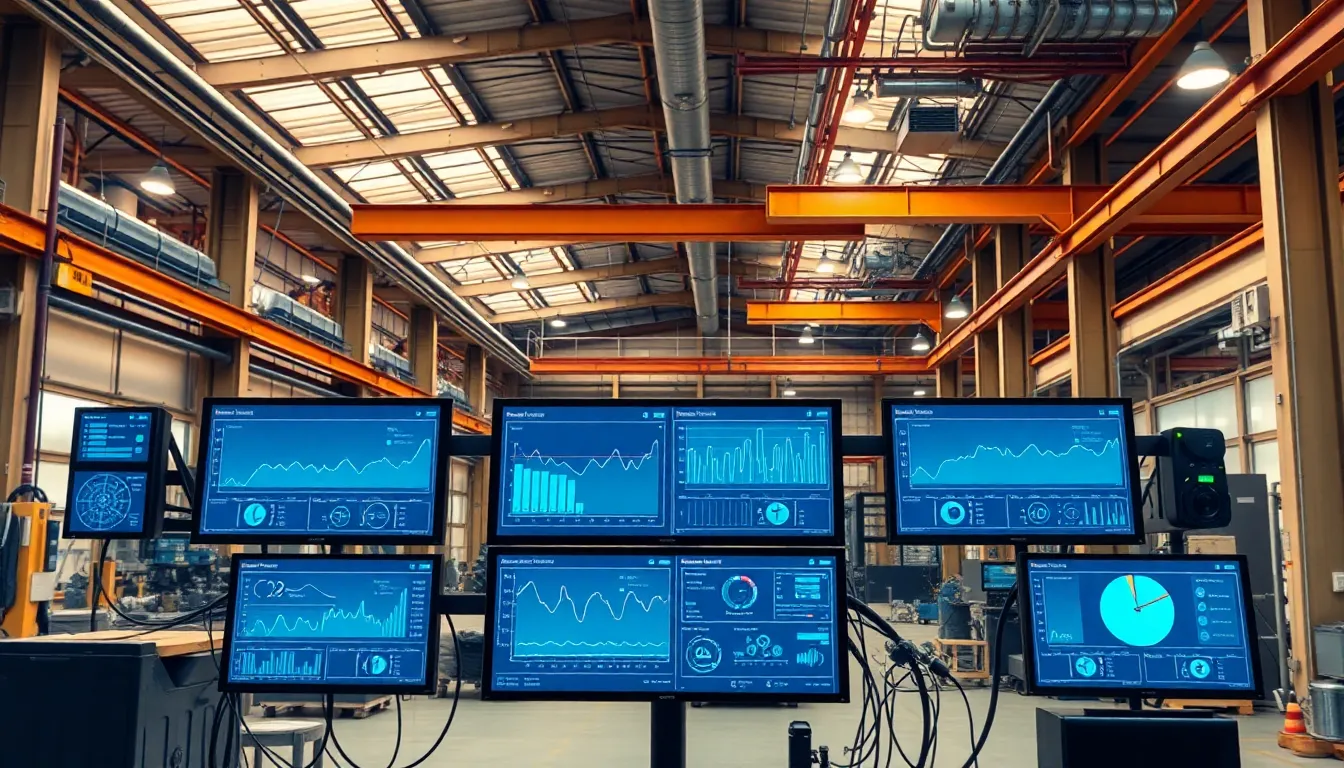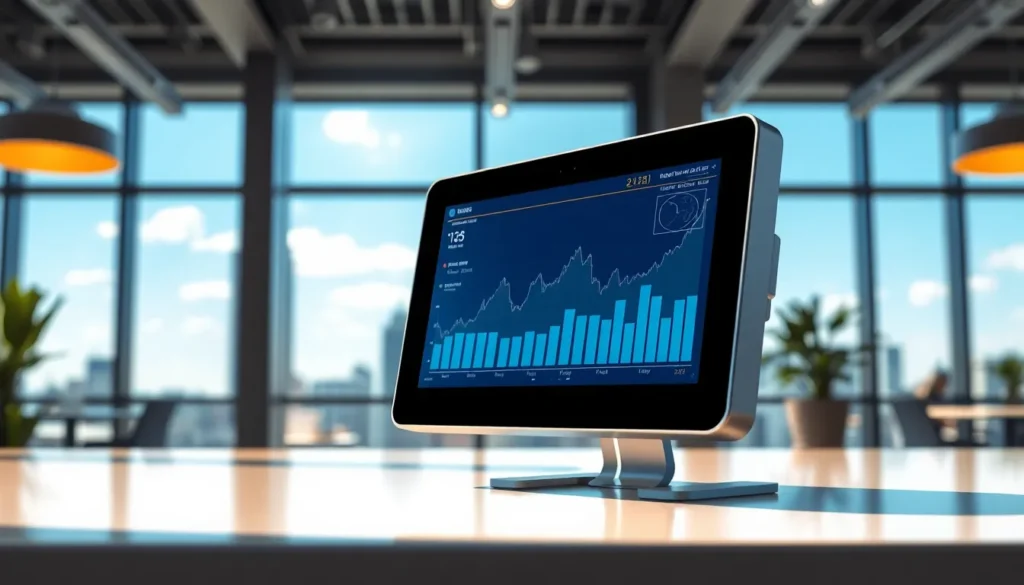In a world where everything from your fridge to your thermostat wants to chat, the Internet of Things (IoT) monitoring system is the ultimate eavesdropper. Picture this: a network of smart devices working tirelessly to keep tabs on your home, office, or even your favorite coffee shop. It’s like having a personal assistant who never sleeps—except this one doesn’t need coffee breaks or a paycheck.
With IoT monitoring systems, users can effortlessly track everything from temperature and humidity to energy usage, all while sipping their morning brew. These systems not only enhance efficiency but also save money and resources. So why let your devices run wild when they can be tamed? Embrace the future and discover how an IoT monitoring system can turn chaos into harmony, all while giving you the peace of mind you didn’t know you needed.
iot monitoring system
IoT monitoring systems consist of advanced smart devices that track various environmental factors in real time. These systems offer numerous advantages, facilitating better management and enhancing efficiency.
Definition And Importance
An IoT monitoring system refers to a network of interconnected devices used to collect and analyze data from various sources. It plays a crucial role in optimizing resource usage, improving operational efficiency, and enabling informed decision-making. By continuously monitoring conditions like temperature and humidity, these systems contribute to energy conservation and cost reduction. Organizations leveraging IoT monitoring gain a competitive edge while providing better insight into their environments.
Key Components
Key components of IoT monitoring systems include sensors, connectivity modules, and data analytics platforms. Sensors detect physical parameters such as temperature, humidity, or motion, capturing essential data points. Connectivity modules, like Wi-Fi or Bluetooth, transmit data to centralized platforms for processing. Data analytics platforms analyze the collected information, offering actionable insights. Together, these components create a seamless system for monitoring and managing environments effectively.
Types Of IoT Monitoring Systems

Various types of IoT monitoring systems exist, each serving unique purposes across different environments. These systems enhance efficiency and provide critical insights into specific areas.
Environmental Monitoring
Environmental monitoring systems track parameters like temperature, humidity, air quality, and light levels. Sensors collect real-time data, enabling immediate adjustments. Businesses use this information to ensure compliance with regulations and improve sustainability practices. Smart agriculture utilizes these systems to optimize crop yields by monitoring soil moisture and weather conditions. Environmental monitoring plays a vital role in creating comfortable living conditions and managing natural resources effectively.
Industrial Monitoring
Industrial monitoring systems focus on machinery and production processes within manufacturing plants. These systems gather data on equipment performance, energy usage, and production output. Through predictive maintenance, downtime gets minimized by addressing potential issues before they cause failures. Additionally, real-time analytics help manufacturers enhance operational efficiency and reduce waste. IoT systems in industrial settings support a smarter, more responsive manufacturing approach that drives profit.
Health Monitoring
Health monitoring systems track vital signs and health metrics for patients or residents in healthcare settings. Wearable devices collect data such as heart rate, glucose levels, and activity patterns. This data gets transmitted to healthcare providers, allowing for timely interventions and personalized care. Remote monitoring reduces hospital visits while improving patient outcomes. Technologies like telehealth also benefit from health monitoring systems, enhancing accessibility and convenience for patients.
Benefits Of IoT Monitoring Systems
IoT monitoring systems offer significant advantages that enhance various operational aspects across industries.
Enhanced Efficiency
Increased efficiency results from real-time data tracking and analysis. Monitoring systems provide instant feedback on environmental conditions. Businesses can adapt quickly to anomalies, maintaining optimal performance levels. Continuous monitoring also helps in automating processes, reducing manual intervention. These systems minimize errors associated with human oversight, promoting a streamlined workflow. Predictive analytics play a crucial role in preempting equipment failures, ensuring uninterrupted operations.
Cost Savings
Cost savings emerge from efficient resource management and reduced operational expenses. IoT systems identify energy consumption patterns, enabling businesses to optimize usage. By detecting leaks or malfunctions promptly, organizations avoid costly repairs and downtime. Additionally, preventative maintenance lowers maintenance-related expenditures over time. Implementing these systems can lead to lower utility bills and enhanced resource utilization. Investing in IoT technologies creates long-term financial advantages for companies.
Data Insights
Data insights obtained from IoT monitoring systems drive informed decision-making. Collected data allows businesses to analyze trends and behavior patterns. Actionable insights support strategic planning and operational adjustments. Enhanced visibility into performance metrics ensures better resource allocation. By leveraging analytics, organizations can identify areas for improvement, mitigating risks. Effective data management ultimately fosters a culture of continuous improvement and innovation.
Challenges In Implementing IoT Monitoring Systems
Implementing IoT monitoring systems presents several challenges that organizations must address to ensure effectiveness and security.
Security Concerns
Security remains a top priority for IoT monitoring systems. Many devices are vulnerable to cyber attacks, leading to unauthorized access and data breaches. Intruders can exploit weak points in the network, targeting devices that lack robust security measures. Organizations must invest in encryption, authentication, and secure firmware to mitigate these risks and protect critical data. Regular software updates also play a vital role in patching vulnerabilities. By combining strong security protocols with ongoing monitoring, businesses can enhance their systems’ resilience against cyber threats.
Data Privacy Issues
Data privacy issues represent another significant challenge in IoT monitoring. Continuous data collection raises concerns about how personal information is stored and used. Mismanagement of sensitive data may result in legal implications or loss of customer trust. Transparency is essential; users should understand what data is being collected and how it will be used. Compliance with regulations, such as the General Data Protection Regulation (GDPR), ensures protection of consumer privacy. Employing data anonymization techniques can further safeguard individual identities while still providing valuable insights.
System Integration
System integration poses a challenge for implementing IoT monitoring solutions. Diverse devices and platforms often have compatibility issues, complicating data sharing and analysis. Standardization of communication protocols is crucial for seamless integration across various devices. Organizations benefit from selecting devices that adhere to widely accepted standards, which fosters smoother integration processes. Investing in middleware solutions can also facilitate interoperability and data unification. Ultimately, addressing integration challenges enhances system efficiency and provides a cohesive monitoring experience.
Future Trends In IoT Monitoring Systems
Emerging trends in IoT monitoring systems showcase significant advancements that promise to reshape industries. This evolution includes stronger integration with artificial intelligence and machine learning, as well as a notable expansion in smart city implementations.
AI And Machine Learning Integration
AI and machine learning increasingly transform IoT monitoring systems. These technologies enhance data analysis capabilities, enabling predictive maintenance and anomaly detection. Organizations implement algorithms that learn from historical data, allowing for proactive measures that reduce downtime. Machine learning techniques fine-tune the monitoring processes, adapting to changing environmental conditions. Enhanced decision-making becomes possible with AI-driven insights, helping businesses optimize operations and resource allocation. It is anticipated that more companies will leverage this integration, leading to improved operational efficiencies and cost savings.
Expansion In Smart Cities
Smart cities continue to expand with the adoption of IoT monitoring systems. Urban areas incorporate networks of smart devices to manage infrastructure more effectively. Enhanced traffic management solutions emerge, utilizing real-time data to improve flow and reduce congestion. Waste management becomes more efficient, as sensors track fill levels in bins to optimize collection routes. Public safety benefits from these systems, with surveillance cameras and environmental monitoring ensuring a safer environment. Collaboration between governments and tech companies fosters innovation, paving the way for sustainable urban development. This trend will redefine how cities operate, creating smarter, more connected communities.
Conclusion
Embracing IoT monitoring systems can significantly transform how organizations operate. By leveraging real-time data and advanced analytics, businesses can enhance efficiency and make informed decisions that drive success. As these systems evolve with AI and machine learning, their potential for predictive insights and proactive management will only grow.
While challenges like security and data privacy exist, the benefits far outweigh the risks when implemented correctly. The future of IoT monitoring systems promises smarter cities and improved resource management, paving the way for sustainable development. Adopting these technologies not only streamlines operations but also fosters a culture of innovation and continuous improvement.

